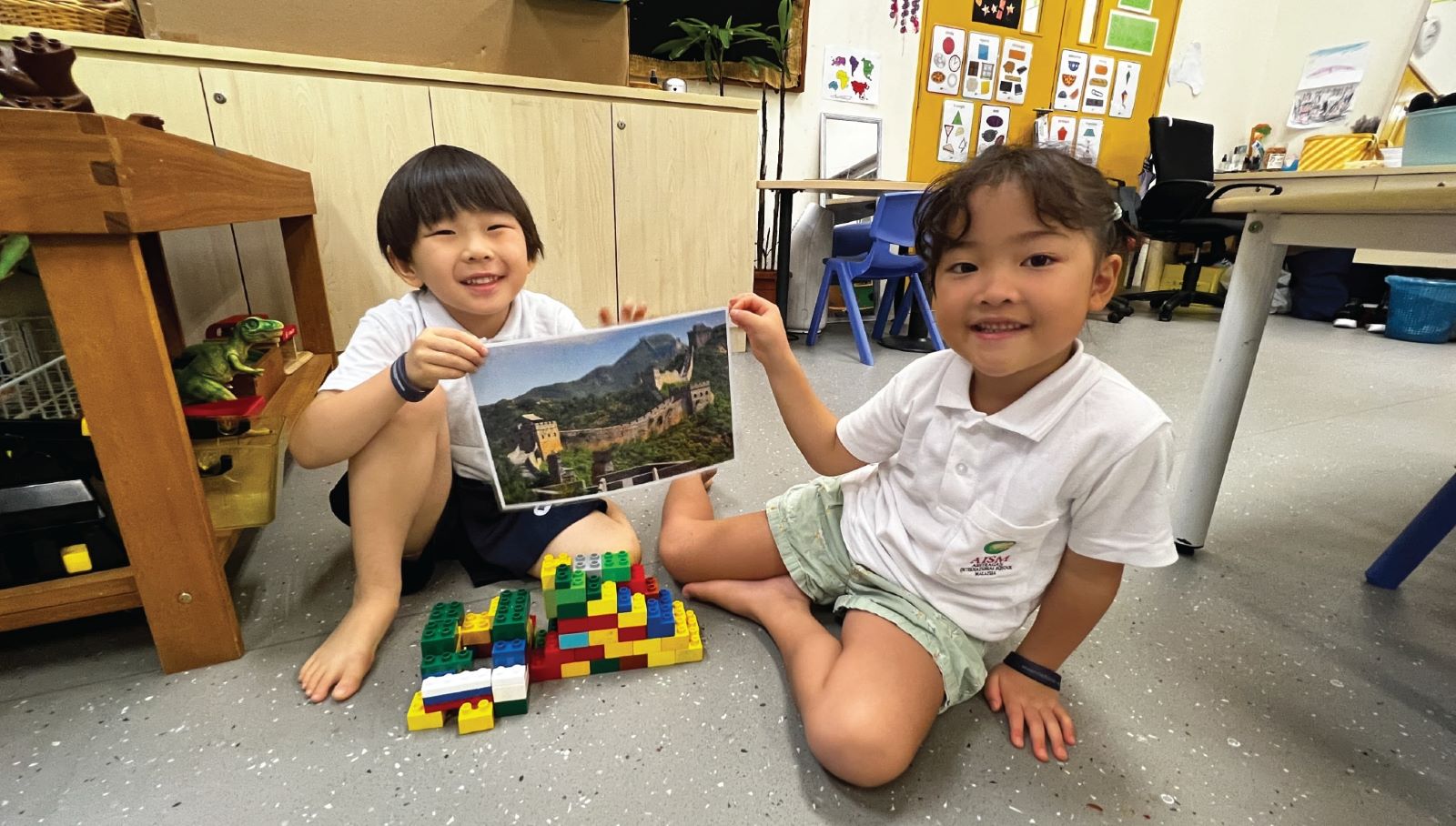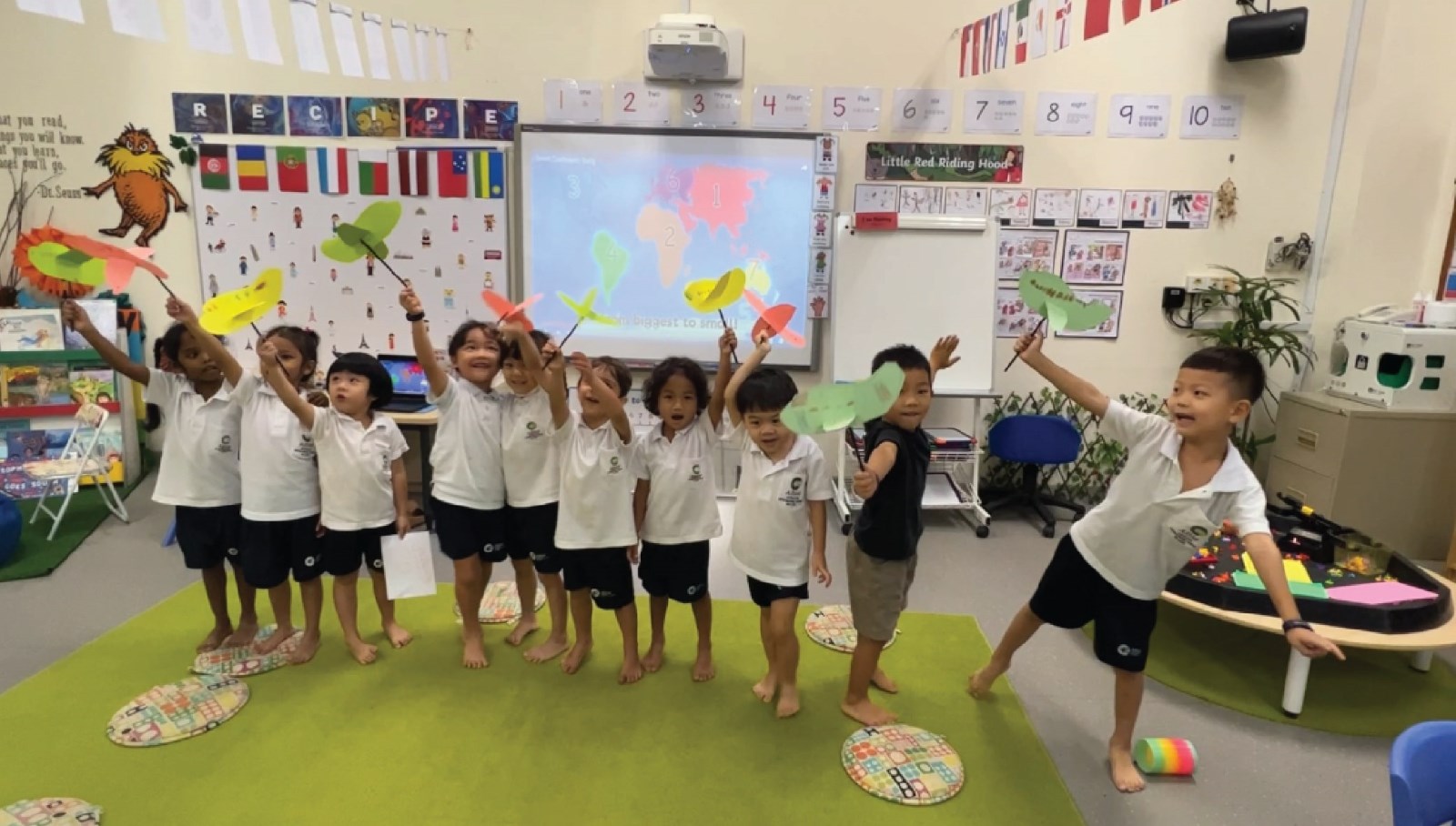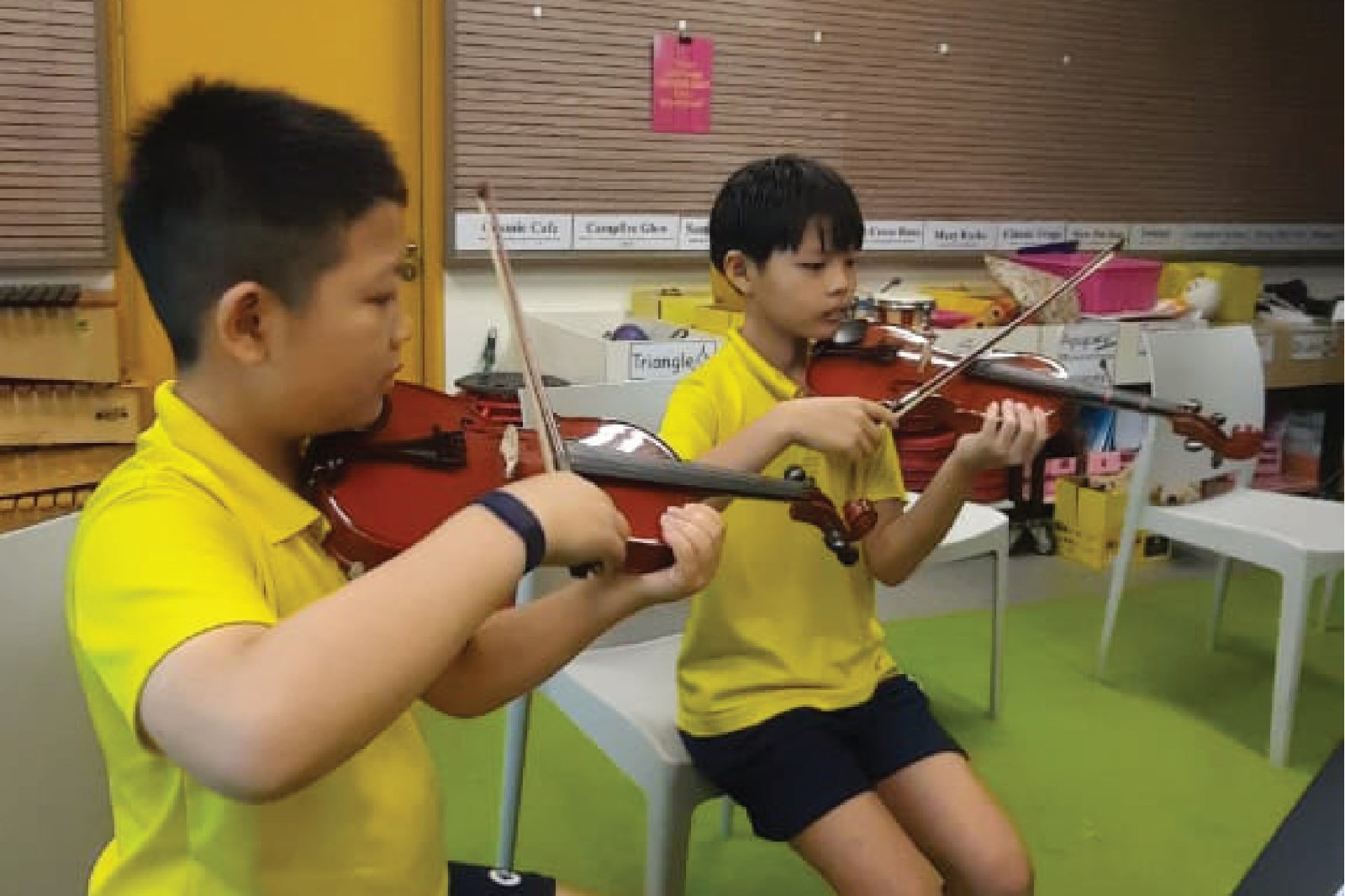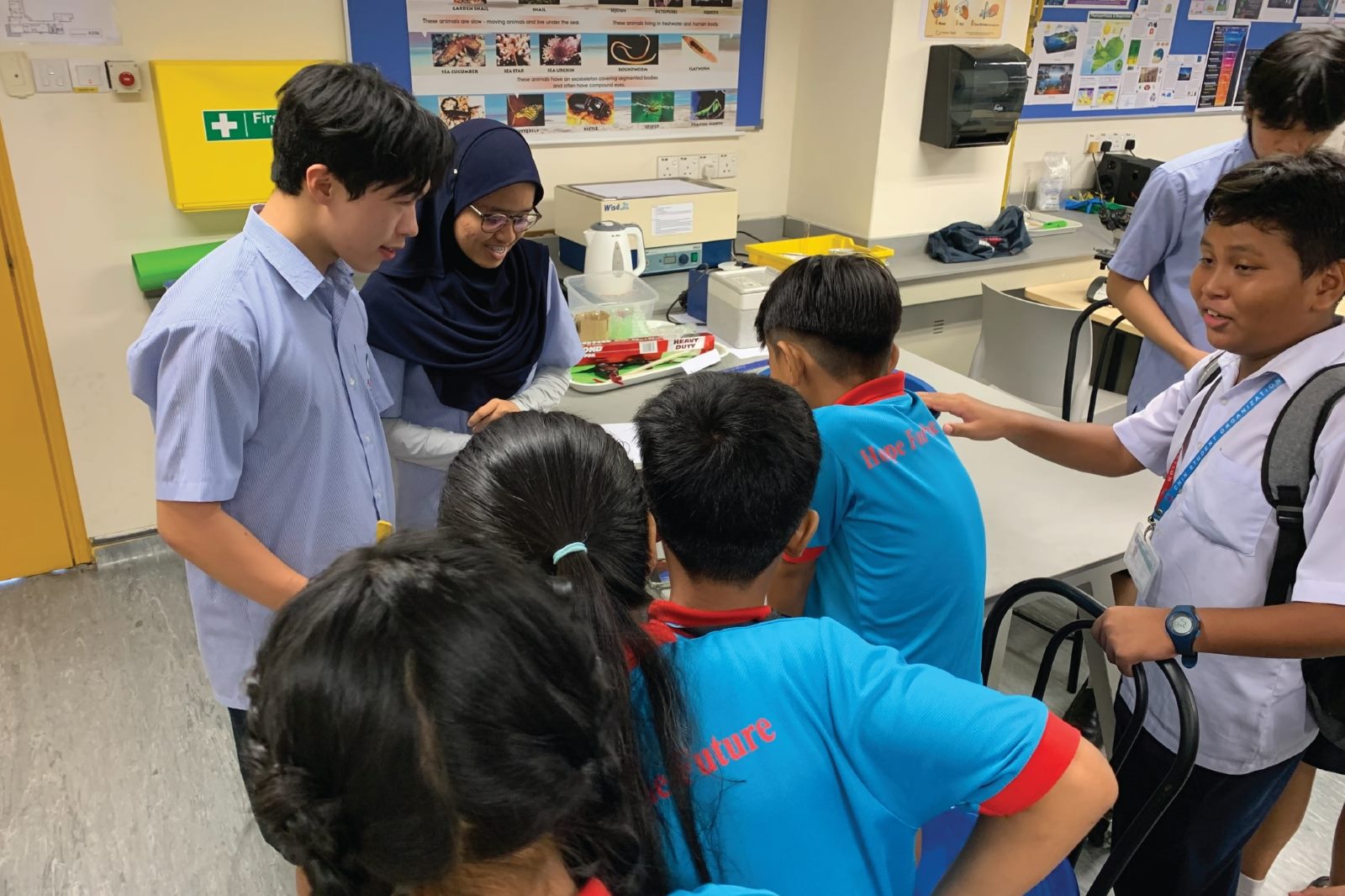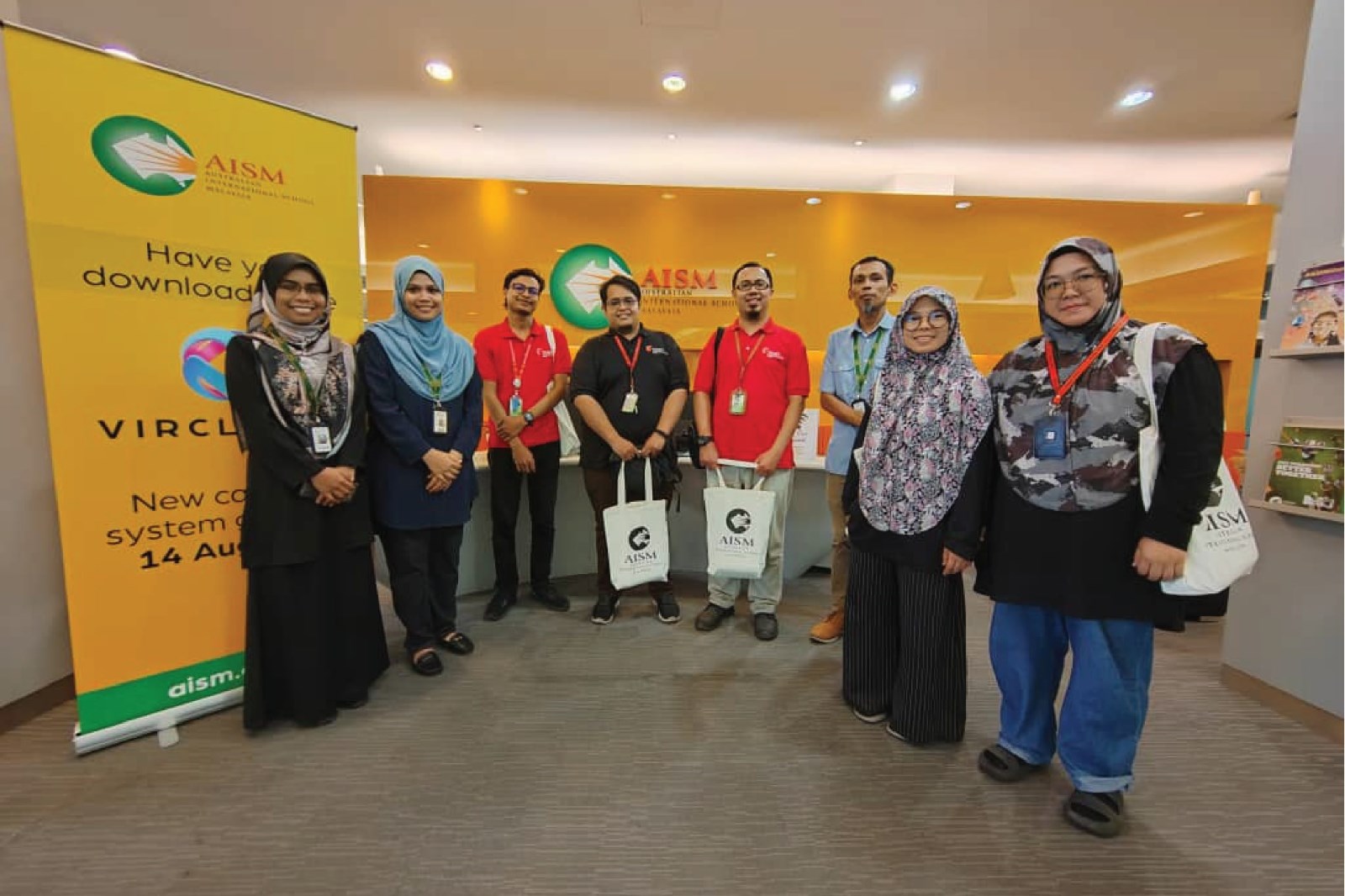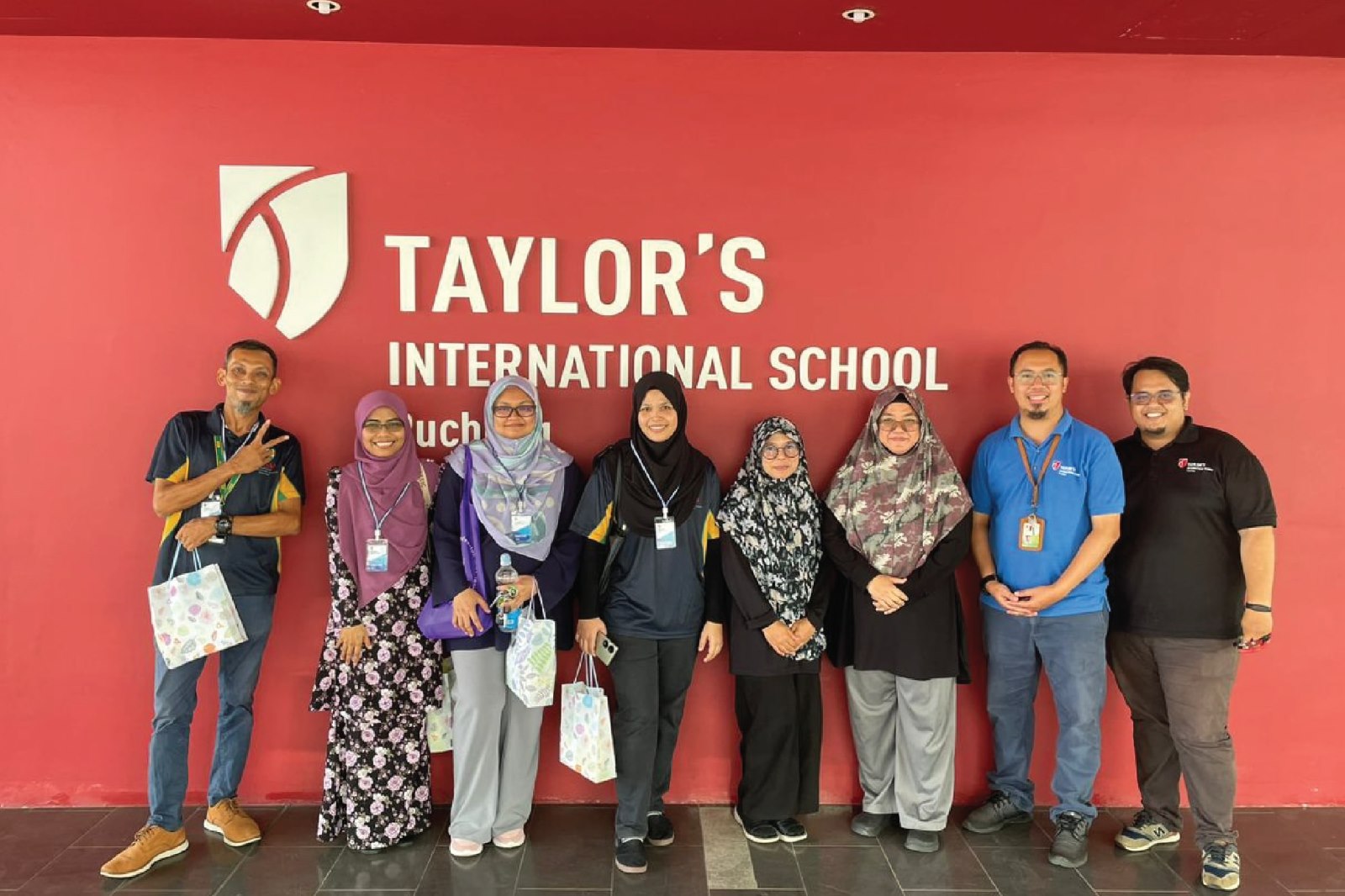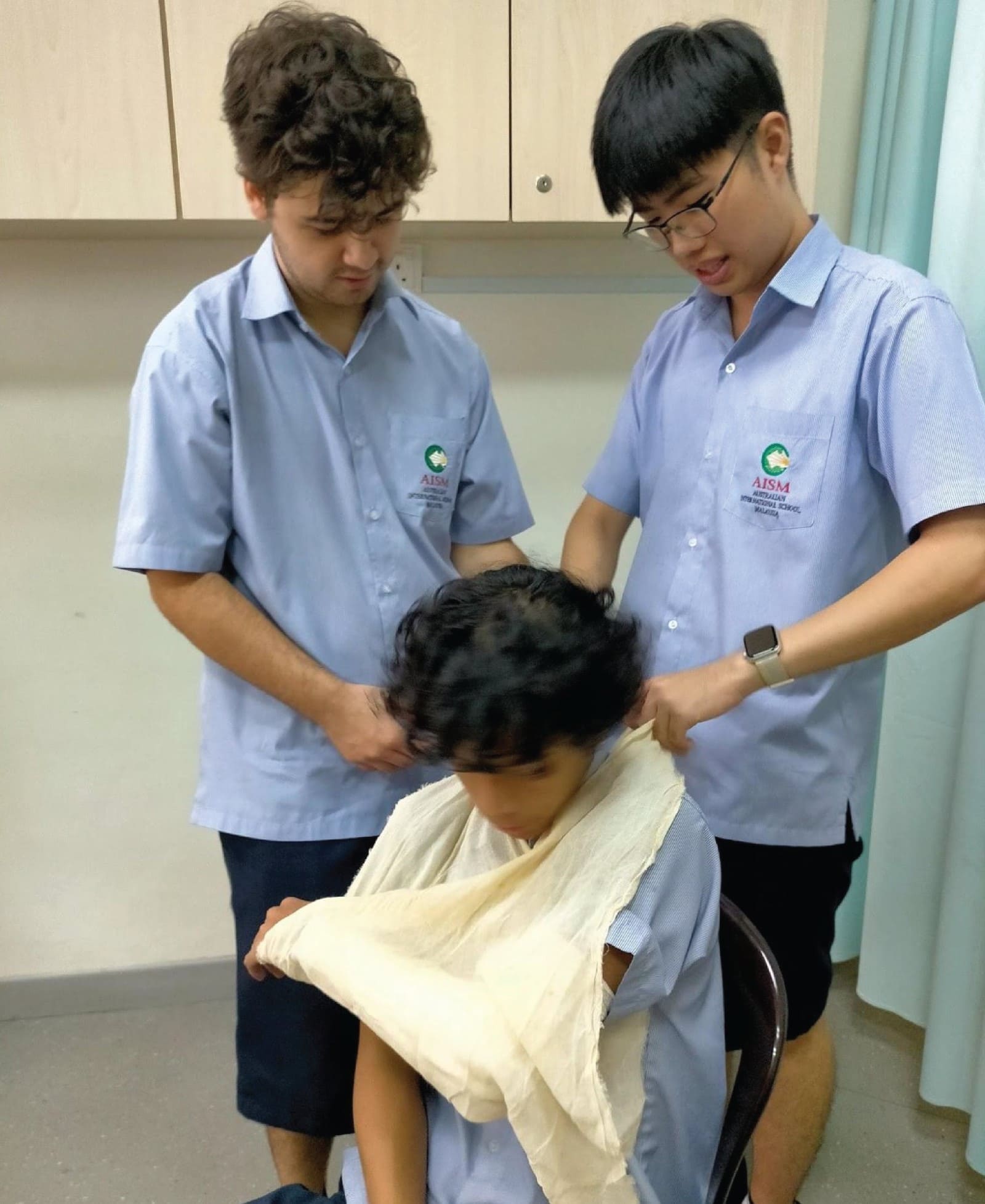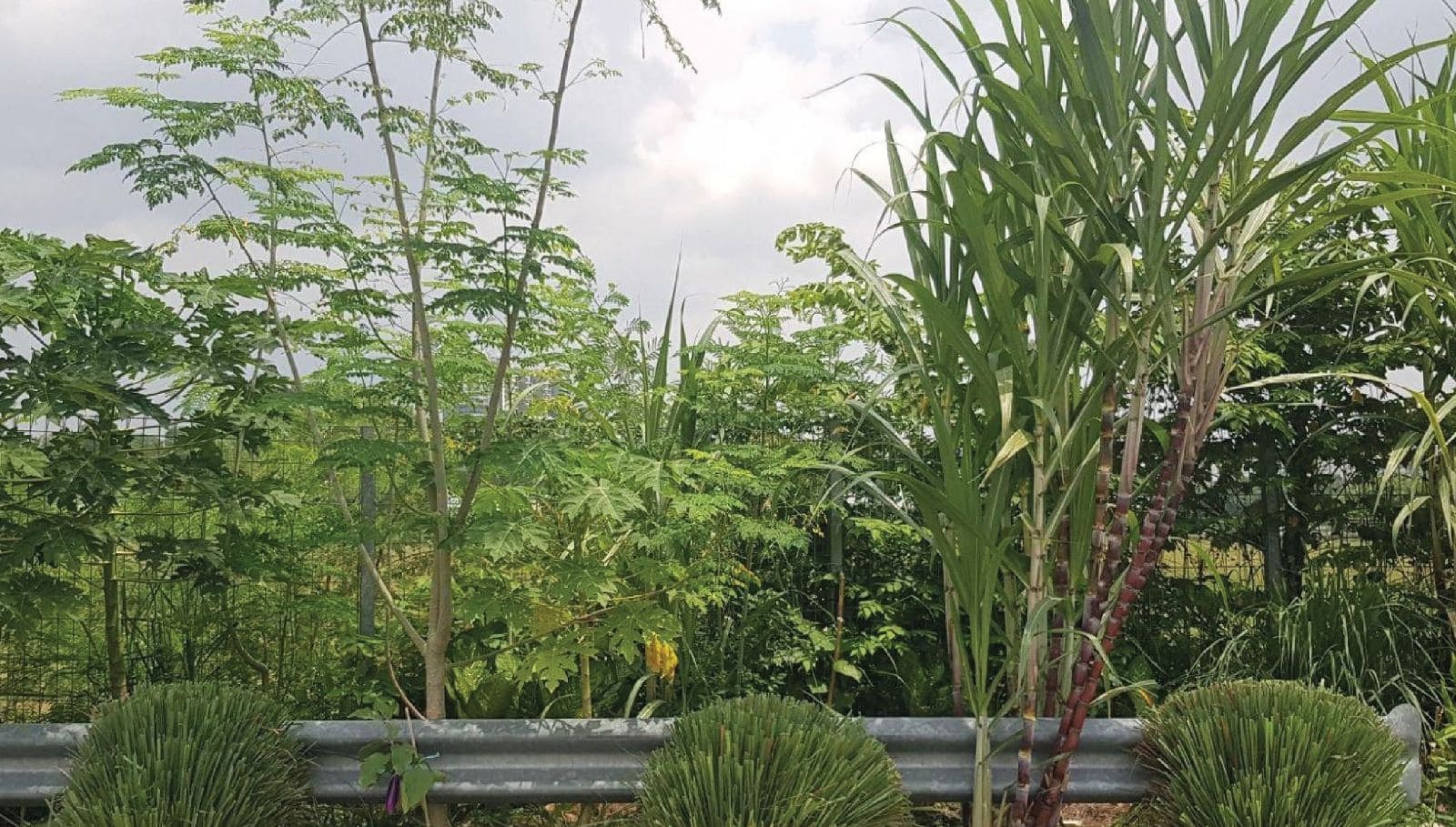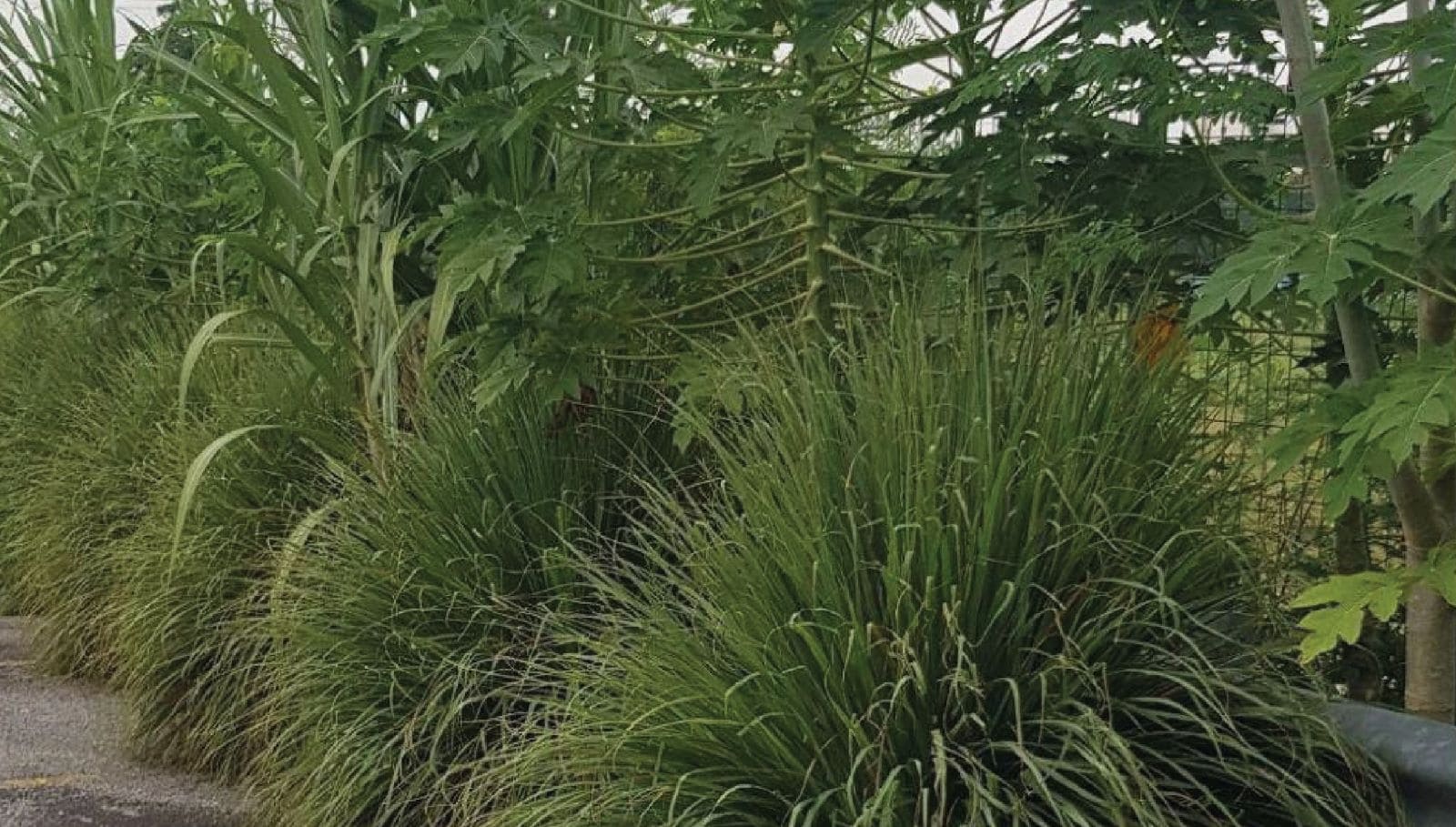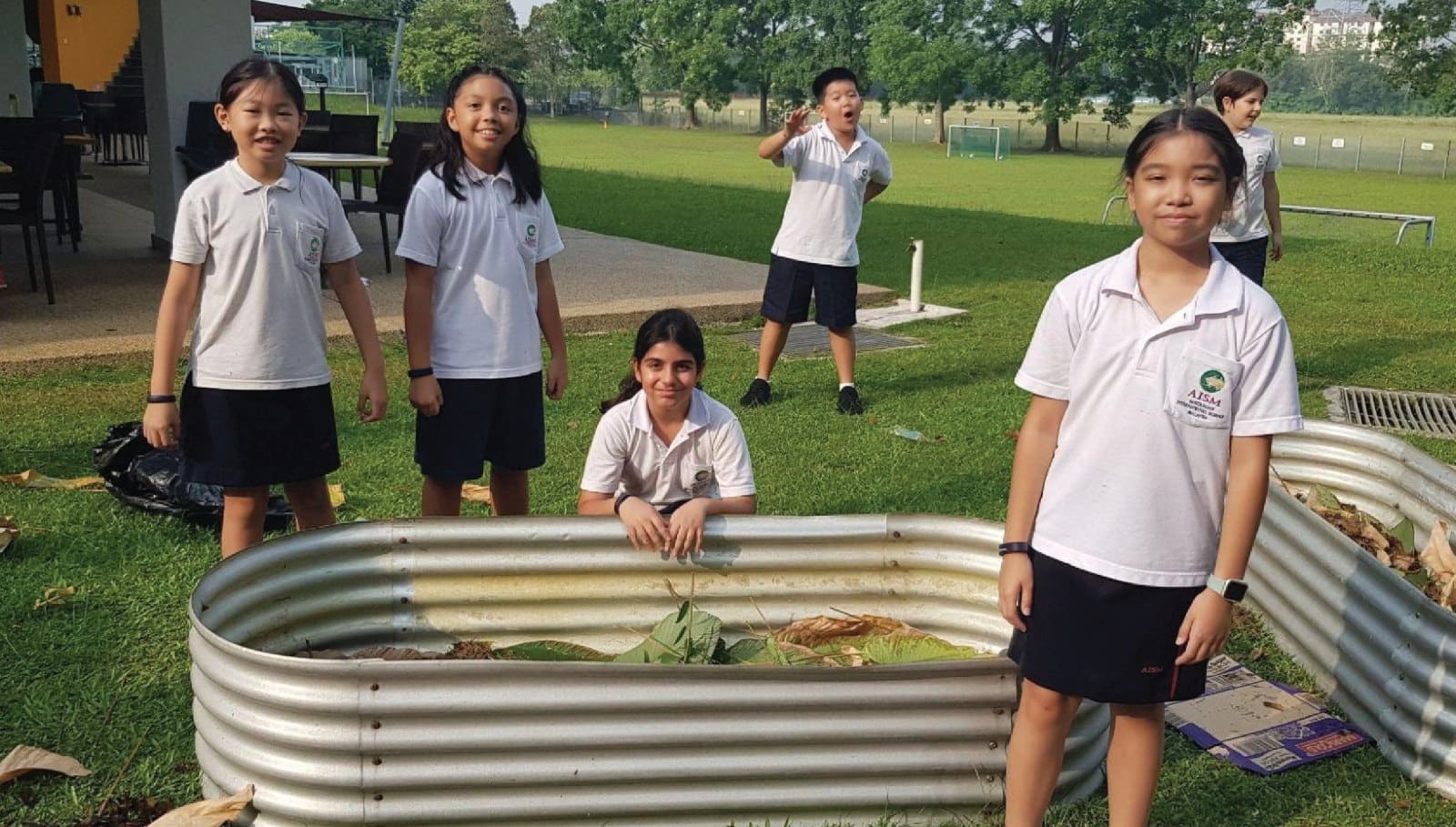PRINCIPALLY SPEAKING
Simon Brooks, Principal

“Slow Looking is taking the time to notice more than meets the eye at first glance, and drawing information from your own unfolding impressions”
- Shari Tishman
STEM Week
It’s STEM Week here at AISM! Just a reminder for those who don’t know, the acronym STEM stands for ‘Science, Technology, Engineering and Mathematics’, which is of course a field of crucial importance in today’s rapidly evolving world.
This week, our students have taken part in a whole smorgasbord of different activities and learning experiences, fostering their enthusiasm for STEM subjects and helping them unpack and explore the secrets of the world in which we live.
Just today our students have been involved in fabric dying; gelato tasting; heat, sound and light experiments; liquid nitrogen demonstrations; microscope investigations; ‘top of the pops’; and robotics. More details on what our students have been learning will follow, but for the moment I would like to extend my immense thanks to Mr. Simon Matheson and all of the teachers in the STEM team for your tireless efforts in bringing STEM alive for our students!
Slow Looking
One of the advantages of an AISM education is that every one of our teachers is trained in pedagogy and practice from the Harvard Graduate School of Education, one of the many things that makes us unique amongst all other Malaysian schools.
Over the last month, AISM teachers have been honoured to experience a series of professional learning experiences with Shari Tishman, Lecturer at Harvard Graduate School of Education and a Senior Research Associate at Harvard Project Zero, where she formerly served as Director. Shari’s research focuses on the development and teaching of thinking, the role of close observation in learning, and learning in and through the arts.

In a nutshell, our teachers are now upskilled to teach for slow looking - helping our students hone their observation skills, looking closely and more attentively at visual detail and drawing information from their unfolding impressions.
Developing this disposition helps our students to deepen their understanding and engagement in all learning areas. For example, with STEM week in mind, slow looking is fundamental to effective scientific thinking, which involves close and careful observation of phenomena in order to be able to formulate hypotheses, and design experiments or studies.
Here are just some of the benefits of this approach for our students:
Slow Looking…
-
Reveals complexity in several ways
-
Sparks curiosity, sketching a rich possibility space of inquiry
-
Helps us see that out own and others’ perceptions and impressions are a valuable source of knowledge
-
Encourages the habit of deferring judgement
-
Teaches us about things, ourselves, and others.
I am so pleased that AISM continues to be on the cutting edge of learning and teaching practices, and delighted for our students that they get to experience learning in this way.
To conclude, I suggest that you take a slow look yourselves at the article towards the end of today’s newsletter, ‘Slow Looking at AISM Micro Ecosystems’. As part of their professional learning with Shari Tishman, teachers were encouraged to ‘walk the everyday’, looking afresh at our natural environment and taking photos of things that caught their attention. I do hope you enjoy reading some of our teachers’ thoughtful reflections.
JUNIOR SCHOOL
Michelle Chaplin, Head of Junior School
ELC Travelogue
Ms Manpreet Kaur Puarr, Ms Bianca Chep, Ms Siti Afsa Abd Ghani, ELC Team
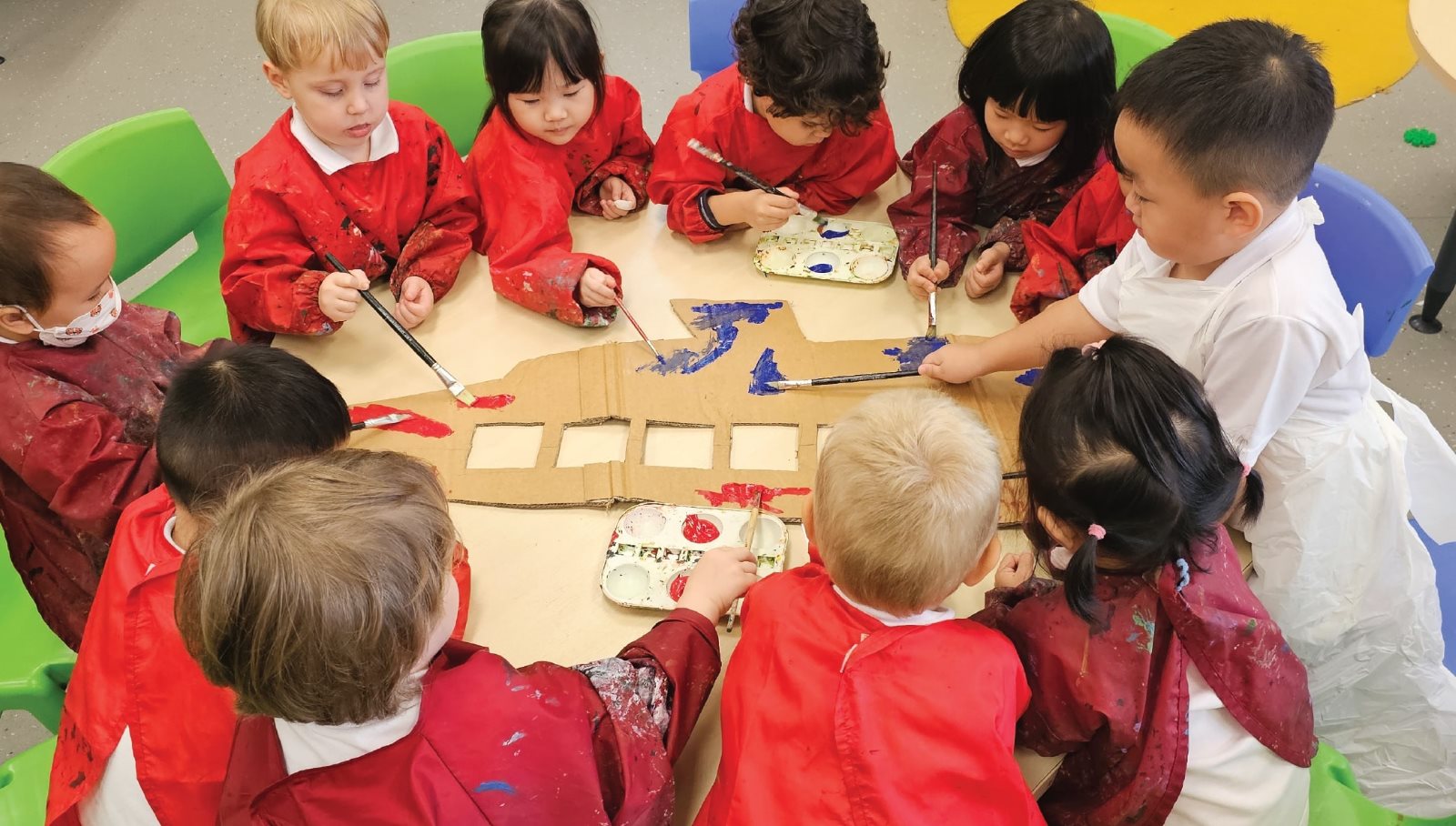
Our ELC learners have embarked on an educational odyssey, diving deep into exploring the seven continents. Through captivating lessons, interactive activities, and engaging discussions, our students have delved into the unique cultures, landmarks, and wildlife that make each continent unique.
The learners have visited Asia as their first continent and are moving on to the next continent, where they will visit the land of Australia and France. While they visited Asia, learners engaged in different activities to develop their understanding of the continent.
The learners used the See-Think-Wonder thinking routine to observe an image of the Great Wall of China. Learners made thoughtful observations and careful interpretations through the lens of a child.
Our learners have embraced the art of chopsticks in an innovative fusion of culture and creativity. They have transformed simple chopsticks into intricate artworks. Fusing fine motor skills and cultural appreciation has resulted in remarkable pieces reflecting their individuality and talents.
The air will be filled with happiness as learners embark on a culinary adventure this week; they will make fairy bread with hundreds and thousands of colourful sprinkles.
Following through, the young explorers will set foot in the French room this week, adorned with the charm of France's language and culture. Their eager minds will venture through learning new words, songs, and colours as they take their first steps into the world of French.
By opening the doorway to a different culture, learners will gain a deeper understanding of diversity and expand their horizons as their curiosity and enthusiasm transform the classroom into an exciting learning environment.
Click here for more photos
Junior School Music
Ms Nicki Taylor, Music teacher

We might be finished with our Production this term, but we certainly haven’t stopped making music!
The lower Junior School continue to develop their confidence in singing, playing instruments and performing and enjoy the fortnightly ‘choir’ session as a combined group. The learners are developing quite a repertoire of songs, some with accompanying dances, that you might have heard being sung at home.
Year 3 will recommence recorder learning this term, after a pause during the Production season. Playing a wind instrument encourages learners to control their breath and play together with attention to their part within the class ensemble. Learning recorder sets up many skills that can be transferred to other instruments. These skills will be invaluable in a couple of years when the learners are involved in the wind instrument programme. I had an alto saxophone student in Year 7 who said to me this week - “oh, so it’s just the same as recorder notes?” - and he was right!
Year 4 have now commenced their violin programme after experiencing the ukulele course last semester. I have been impressed with their maturity in caring for the instruments and their tenacity with learning the initial skills of holding the instrument and the bow, reading the music, and sitting with good posture is evident. Violins are required at school every Friday.
Year 5 have recommenced their flute, clarinet, trumpet and trombone studies this semester. Learning a wind instrument poses a new set of challenges and requires resilience and commitment. We have had some wonderful moments of loudness and eventually breakthroughs when the correct note comes out! I have encouraged the students to practise for a couple of minutes, four times a week to ensure progress. Very short, regular practice sessions are imperative for learning wind instruments as it takes time to develop the muscles in the embouchure. Instruments are required at school every Tuesday.
MIDDLE & SENIOR SCHOOL
Simon Brooks, Head of Middle & Senior School
STEM Week at AISM Showcases Student-Led Learning and Collaboration
Mr Christian Ogle, Lead Biology teacher and Coordinator of Student Representative Council

In an exciting showcase of education and collaboration, AISM students recently celebrated STEM Week. Amongst the plethora of events, exhibitions and rich learning across the school, an event that brought together Year 11 HSC Biology students and a select group of students from the CHIN organization linked our community. AISM students had the unique opportunity to work with CHIN students about what they have been learning in HSC Biology. The AISM students were brimming with excitement as they welcomed the CHIN students to the laboratory. The chance to share their insights and experiences with others was a source of pride, and they eagerly engaged in designing three distinct activities to showcase their scientific learning.
The first activity immersed the participants into the microscopic world as AISM students led sessions on operating advanced binocular microscopes. Under their guidance, attendees delved into the intricate realm of plant and animal cells, identifying various cellular structures that are crucial to the understanding of life processes.
The second captivating activity focused on natural selection and the predator-prey relationship. AISM students orchestrated simulations that allowed participants to observe how prey species adapt to ensure survival. This hands-on experience illustrated the principles of evolution and showcased the intricate balance that exists in ecosystems; highlighting how prey species adapt through camouflage to survive in their environments. This activity also illustrates the complex interplay between biology and environment.
The third activity ventured into the intriguing territory of physiological responses to environmental stimuli. AISM students orchestrated an investigation into the effects of cold temperatures on the nervous system. Through interactive activities, participants explored how chilling conditions can impact nerve function, offering valuable insights into the adaptability of living organisms.
The CHIN students were captivated by the hands-on activities and interactive learning experiences curated by their AISM counterparts. The engaging sessions not only imparted scientific knowledge but also fostered a deeper appreciation for the wonders of biology and its real-world applications. The AISM students also found themselves equally enthralled by the event. The joy of sharing their passion with fellow students and witnessing their enthusiasm for science left an indelible mark. As the curtain closed on STEM Week at AISM, the echo of shared knowledge and scientific exploration lingered on. The event not only showcased the remarkable talents of Year 11 HSC Biology students, but also underscored the power of collaboration and mentorship in fostering a love for STEM disciplines.
TECH Meet 2023 featuring Taylor's Education Group
Ms Ida Mohd Ariff, MSS Science Department Team
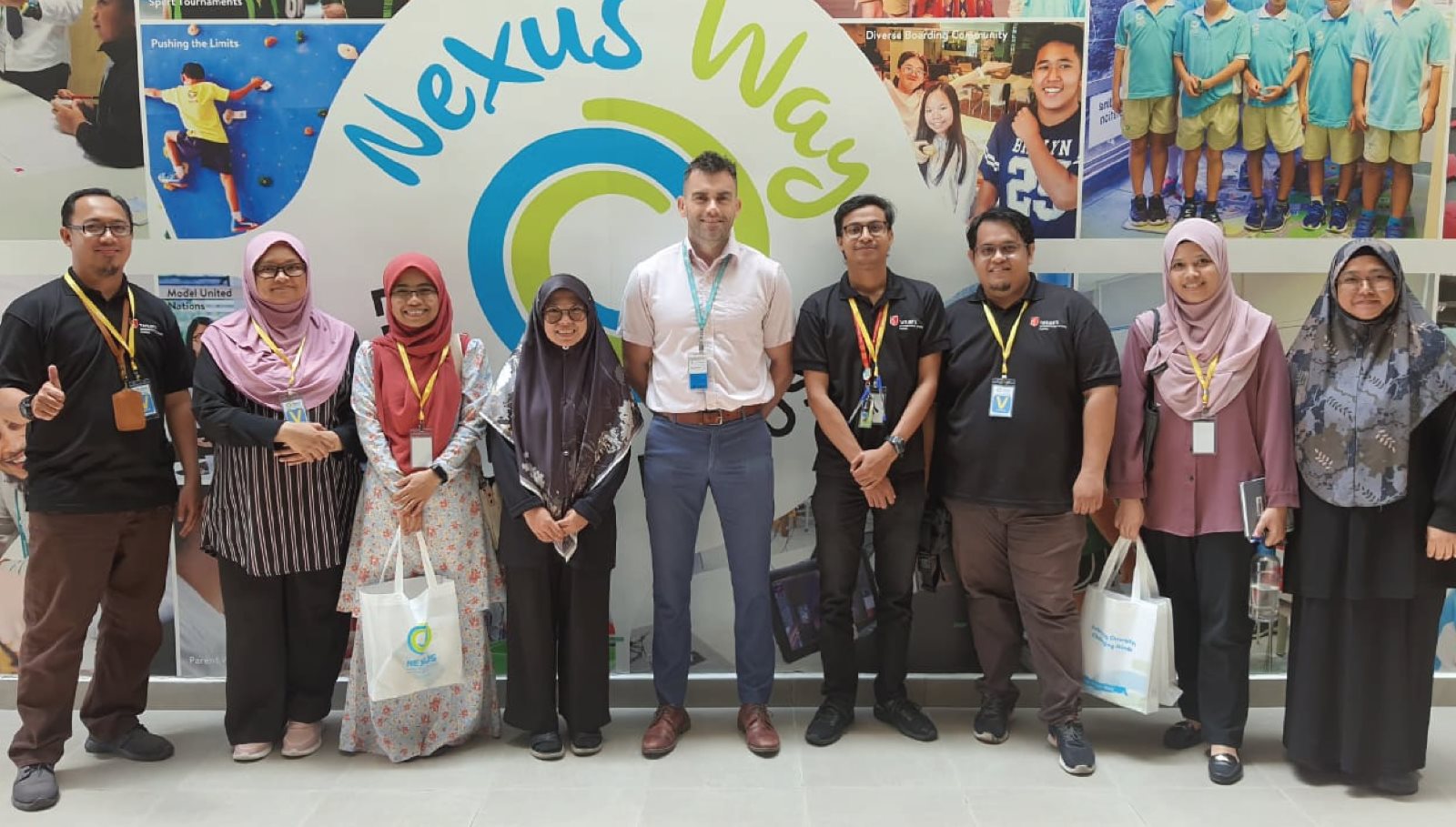
On Friday, 4th of August 2023, the AISM Laboratory and Workshop Technicians hosted the inaugural “TECH meet” for Taylor’s Education Group school’s technicians. The purpose of this event was to exchange ideas, share best practice, identify strengths, weaknesses and opportunities in laboratory management and operations. During this event we were proud to present the AISM Science laboratories and Design Technology Workshop, collecting incredibly constructive feedback inclusive of areas for improvement. In return, our AISM technicians have returned the visit, by attending NEXUS and TISPC campus in Week 4 to gain on-site experience and build a fruitful relationship among TEG school technicians.
Thank you to our Head of Faculty, Mr Simon Matheson, for supporting this initiative. Also to Ms Ida Mohd Ariff, Ms Hafizah Najwa Abbas and Mr Azizul Ali for organising and initiating this important networking event. We hope to continue this valuable partnership in the years to come.
The Spooky Delights of the Addams Family
Mr Dale Keys, Artistic Director

What an exhilarating journey it has been with The Addams Family Musical! From creativity to camaraderie, we've experienced it all. Our cast, crew, and musicians have forged bonds, explored their talents, and reminded us of the beauty in embracing our unique selves.
In a thrilling twist, we've outshone ourselves by surpassing last year's Mamma Mia ticket sales – a milestone worth celebrating.
Our students, the stars of the show, have truly embodied the quirky charm of The Addams Family. Their growth and dedication have been nothing short of inspiring. From stage management to lighting, sound, acting, music, photography, videography, set design, dance, and choreography – their multifaceted talents illuminated our community.
This production has been a celebration of our differences, a testament to the power of artistic expression. Take a moment to glimpse the incredible photos captured by our marketing team and our talented student photographers. Until next time, stay true to the Addams spirit, cherish the memories, and remember “its family first and family last”, so “move towards the darkness”, and embarrass your own “normal”!
Brace yourself for laughter, shivers, and a nostalgia overload as we present to you a highlight reel of the most eccentric and memorable moments from the show. Get ready to snap your fingers and click below to relive the madness one more time – it's a graveyard smash you won't want to miss!
Click here for more photos.
CPR & First Aid Training With Students
Mrs Mac, Head School Nurse
Some of the Year 11 students did their practical First Aid and CPR training with the school nurse. They practised how to treat persons with sprain injuries, fractured, burns, bleeding and embedded objects. They also learnt how to perform CPR and how to place a recovery position. Imad, Marcos and Oliver participated in the training with enthusiasm.
Slow Looking at AISM Micro Ecosystems
AISM Teachers
“White Jasmine Dwarf is a ubiquitous plant and flower around AISM, with a
strong scent and easy to grow nature. Each and everyday students walk or
ride past without a concentrated thought about the life and environment of
this plant. Zooming in, there is an entire micro-ecosystem thriving and
competing under and around the foliage. Ants and small insects rushing about
their business all helping to support one another, collecting, transporting,
communicating all in an effort to survive. There is an invisible world of
interrelationship and co-dependence, which places a lens on our human
disposition/connection to one another and our surroundings. Families working
together to provide shelter, food, warmth and care… simple but most
important at our core mission for AISM students.”
-Simon Matheson
Head of Science and Technology
“The subtle gradients of purple were mesmerizing, and we marveled at how
nature could create such perfection. I noticed the tiny dewdrops that clung
to the edges of the petals, glistening in the sunlight like precious jewels.
I noticed the soft hum of bees buzzing around the flowers, diligently
collecting nectar. The gentle sound of their wings and their busy work added
a sense of harmony to the scene, reminding us of the interconnectedness of
all living beings in our ecosystem. The purple flowers sparked a moment of
reflection as I felt a sense of gratitude for the chance to witness such
beauty in our everyday lives. It made me realise how often I rush through my
days, oblivious to the magic that surrounds me.”
-Jaeshinthaa Kaur Uppal
Librarian
“Here we see trees with shapes and striations resembling neurons. It made me
consider the possibility of parallels between nature and our bodies, and
more specifically our brains. This led me to consider how we might apply
these similarities to education. Would it be possible to teach by
emphasising what we share in common rather than focus on our differences?
Could we learn better in group settings rather than only as individuals, and
could that learning provide enhanced life skills? Could we then blend both
approaches for maximum effect? Here at AISM we do not focus on divisive
standardised testing. Alternatively through a more holistic and humane
approach to education, we value inclusivity, collaboration, innovative
achievement and critical thinking. A learning ecosystem that celebrates both
shared and personal growth while preparing students for working environments
that more closely resemble the real world, much like participating elements
in nature continually adapt and adjust for mutual benefit and sustainable
balance.”
-Isabel Perez
Head teacher - Information Software Technology
“Taking a walk around my school's neighbourhood, among the usual concrete
and cars, I spotted a bunch of lovely pink flowers. I decided to capture
this moment with my camera, and those pink flowers became my focus. I was
amazed by the details – the lines on the petals and the sparkling dewdrops.
This picture reminds me that beauty can be found anywhere if you look
closely. These flowers might be small, but they have their charm. I want
others to see the beauty in everyday things at AISM – to take a moment,
appreciate the details, and find joy in simple surprises.”
-Nor Rashina Hayrat Ali
Teacher - Mathematics and Bahasa Malayu
“Taking a walk around our school has become a daily routine for Michelle and
myself. With a focus on planetary health, it was inspiring to see the
luscious plants filling nooks around our school. Zooming in on the rich
soil, the consideration of plant placement and a visual catalogue of our
learning journey. Our living component of people - our learners! Caught
observing this moment of team work with a new student being guided in
Mandarin by her buddy. Sharp actions, connecting movements - so beautiful!”
-Leigh Janett
Deputy Head of Junior School
“As my hobby is the art of bonsai, I always hone in on the micro plants and
trees that are growing in the drains, or along the walls, in cracks or over
the rocks. I want people to simply just notice them and learn from their
character of resilience and adaptability. I often relate to these plants as
they are not only trying to survive, but thrive in habitats that are not
their natural environment. I draw inspiration from their ability to not only
harmonise with their surroundings, but bring beauty and enhance those
surroundings. We can learn a great deal from nature, rather than just see it
as a commodity.”
-Steven Webster
Pastoral Coordinator Year 9&10 and Humanities Teacher
WHOLE SCHOOL
Care:Mvmt (Care Movement): Care for the World
Mr Laurent Epetahui
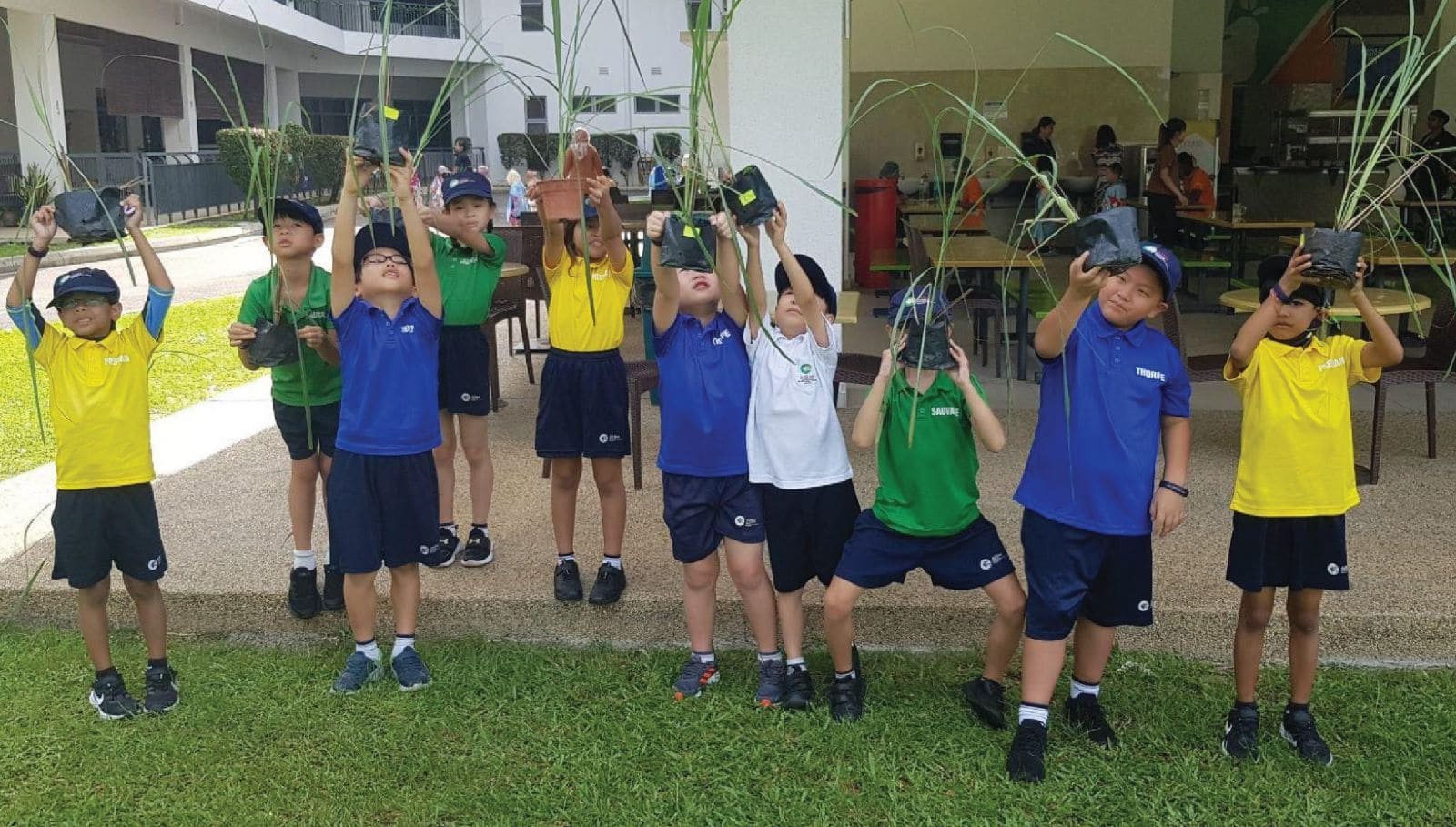
“When do we start when it comes to planting?
The answer is this: Directly in the ground and garden beds! Here at AISM Living Campus, we practise a green and sustainable method that respects our environment and Mother Nature. With that vision in mind, there are steps that we must respect. The first step is the preparation of the ground and for that we only use natural organic compost. This helps the soil to gain all organic nutrients that in return helps to grow healthy plants. We learnt organic composting using red worms to process our biodegradable materials. For our nursery we use our magic combination of natural compost and vermicompost for germination and first steps of growing plants.
In Term 3 we are exploring 2 different areas to practise our sustainable planting method. We are using direct ground planting at our car park. Secondly, we are using our garden beds next to the canteen.
Park Ground: Students from Junior School planted lemongrass and mexican mint.
Results: We will see the “greens” happening very soon; we can already witness the changes from previous activities.
Garden Beds: Preparation of the garden beds using inhouse biodegradable materials, green and brown from our garden and carton boxes from the canteen. We are at the start of the sustainable method of planting.
Next phase: We will be using natural organic compost to fill up our garden beds. Happy Living Campus!
GO GREEN, GO SUSTAINABLE, THINK GREEN AND ACT GREEN
